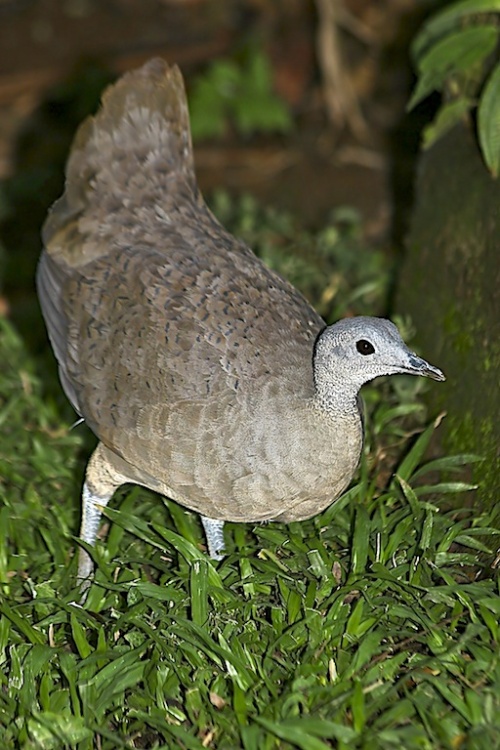| Line 1: | Line 1: | ||
;[[:Category:Tinamus|Tinamus]] major | ;[[:Category:Tinamus|Tinamus]] major | ||
| − | [[Image: | + | [[Image:Great_TinamouStanley_Jones.jpg|thumb|500px|right|Photo: {{user|Stanley+Jones|Stanley Jones}} <br/>Location: La Cinchona, Alajuela Province, [[Costa Rica]].]] |
==Identification== | ==Identification== | ||
Revision as of 07:03, 2 July 2012
- Tinamus major
Identification
A large (46cm.) tinamou, olive-brown above spotted and barred with black, paler and greyer below, flanks barred black, belly whitish and undertail cinnamon. Crown and neck rufous, occipital crest and supercilium blackish. Legs blue-grey.
Distribution
From southern Puebla, Vera Cruz and Oaxaca in southern Mexico to Panama, and in northern South America from Colombia and Venezuela south to northern Bolivia and western Brazil. Resident.
Taxonomy
Central American Races:
- percautus: southern Mexico and Guatemala
- robustus: from central Guatemala to northern Nicaragua
- fuscipennis: from east Nicaragua to Panama
- castaneiceps: south-west Costa Rica and western Panama
- brunniventris: central Panama
- saturatus: eastern Panama and northern Colombia.
South American Races:
- latifrons: western Colombia and western Ecuador
- zuliensis: eastern Colombia and western Venezuela
- major: the Guianas and northern Brazil
- olivascens: eastern Brazil
- peruvianus: eastern Colombia, eastern Ecuador and eastern Peru
- serratus: southern Venezuela and western Brazil.
Habitat
Rainforest and cloud forest from sea-level up to 1,500m and often near water. Nests at the base of a tree and roosts in trees. Fairly common over much of range and less secretive than some other tinamous, though more often heard than seen, usually solitary.
Behaviour
Plaintive tremulous paired whistles, uttered most often at dawn and dusk.




